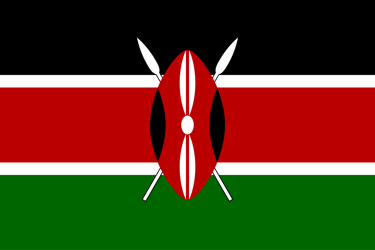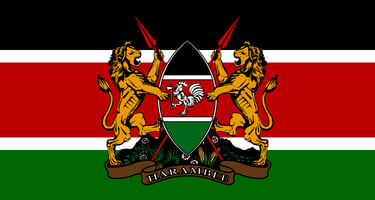SWAHILI KNOWLEDGE
SATISFY YOUR THIRST FOR
DISCOVER THE BEAUTY OF KENYA
Swahili, known as "Kiswahili" in its native form, is one of Africa’s most widely spoken and influential languages. It belongs to the Bantu language family, but its development has been shaped by centuries of cultural exchange, making it unique among African languages.
Swahili is the official language of Tanzania, Kenya, Uganda, and the African Union, and it is widely spoken in several other countries, including Rwanda, Burundi, the Democratic Republic of Congo, and Mozambique. With over 100 million speakers, Swahili serves as a lingua franca across East Africa, connecting people from diverse ethnic and linguistic backgrounds.
Unlike many other Bantu languages, Swahili has been significantly influenced by Arabic, Persian, Portuguese, German, and English due to trade, colonization, and cultural exchanges along the East African coast. These influences are particularly visible in its vocabulary, where many words related to commerce, governance, and religion come from Arabic.
Swahili is deeply tied to the history and identity of the Swahili Coast, a region stretching from Somalia to Mozambique, known for its rich literary tradition, vibrant oral storytelling, and deep-rooted musical heritage. Swahili poetry, known as "utendi", and the region’s taarab music reflect the language’s long-standing cultural depth and influence.
Non-Tonal Simplicity – Unlike many African languages, Swahili is not tonal, making pronunciation more accessible for learners.
Influence of Arabic – Due to centuries of trade with the Middle East, about 30% of Swahili’s vocabulary comes from Arabic. For example, the word kitabu (book) comes from the Arabic kitāb.
Extensive Use of Prefixes – Swahili is an agglutinative language, meaning that it relies heavily on prefixes to indicate tense, negation, and subject agreement. For example, ninakula means "I am eating," while sikula means "I did not eat."
Noun Class System – Instead of grammatical gender, Swahili categorizes nouns into 18 different noun classes, which affect how verbs, adjectives, and pronouns are used. For example, mtu (person) belongs to the M-WA class, while kitabu (book) belongs to the KI-VI class.
Flexible Word Order – Although Swahili follows a subject-verb-object (SVO) structure, its word order can be adjusted for emphasis, making it expressive and adaptable in conversation.
5 Unique Features of the Swahili Language


NATURAL METHOD TO LEARN SWAHILI
Our language courses are based on the Natural Method, also known as the Natural Approach, developed by linguist Stephen Krashen and language educator Tracy Terrell. This approach focuses on creating an environment that mimics how individuals naturally acquire their first language, emphasizing comprehension, communication, and a stress-free learning experience.
While other language courses rely on rote memorization and drills, a heavy academic approach to grammar, repetitive exercises, expensive and time-consuming formal tutoring sessions or ineffective and shallow phone apps, we will have you gradually build your language skills like a child learning his/her mother tongue.
There are essentially 5 Core Principles in the Natural Method:
Comprehensible Input (i+1)
Learners acquire a language when they are exposed to materials slightly beyond their current level of understanding (represented as i+1). By hearing or reading content they mostly understand, learners can gradually internalize new vocabulary and grammar structures.Focus on Communication
The Natural Method prioritizes fluency and the ability to communicate over grammatical perfection. Errors are seen as a natural part of the learning process and are not heavily penalised, reducing anxiety and encouraging learners to express themselves.Emotional Element
Emotional factors like anxiety, motivation and enjoyment greatly influence language acquisition. When learners are in a relaxed state, achieved by removing the anxiety linked to the pressure to produce perfect grammar, it is easier for them to get through the initial phase which is arguably the hardest and where most give up. It is also proven to be easier for the brain to absorb and retain new information if the learner is actually interested in the language and its underlying culture, which is why he have included extensive cultural insights, historical and modern pop culture elements in our language course.Stages of Language Acquisition
Scholars have identified the following stages in the language acquisition process of young children:Pre-production: The "silent period," where learners focus on listening and understanding without speaking.
Early Production: Learners begin using simple words and phrases.
Speech Emergence: Learners can construct longer sentences and express ideas more freely.
Intermediate Fluency: Learners develop more complex language skills and can engage in meaningful conversations.
Advanced Fluency: Learners achieve near-native proficiency.
The goal of our courses is thus to mimic the natural language acquisition process without overwhelming the learner with long and tedious lessons but ensuring gradual gains so that he/she remains committed to his/her fluency goal.
Meaningful Interaction
Instead of rote memorization of single words and grammar rules over and over, the Natural Method encourages activities that involve real-world communication to help retain information. This is why we have included storytelling and role-playing scenarios that simulate everyday situations, with exercises that allow the learner to understand his/her current level and thus improve upon specific elements.


EXPAND YOUR KNOWLEDGE
If you are interested in learning more about Kenyan culture and history as well as the language, we recommend that you download our complete Swahili language course!
You will not only receive all the contents available on our website in convenient pdf formats but also additional contents, including bonus vocabulary, more grammar structures and exclusive cultural insights with additional vocabulary that you won't in any other textbook.
The additional articles include specific words or expressions related to the culture of the Kenyan people. Not only will you be able to speak Swahili with confidence but you will amaze your listeners thanks to your knowledge of their country and history.


